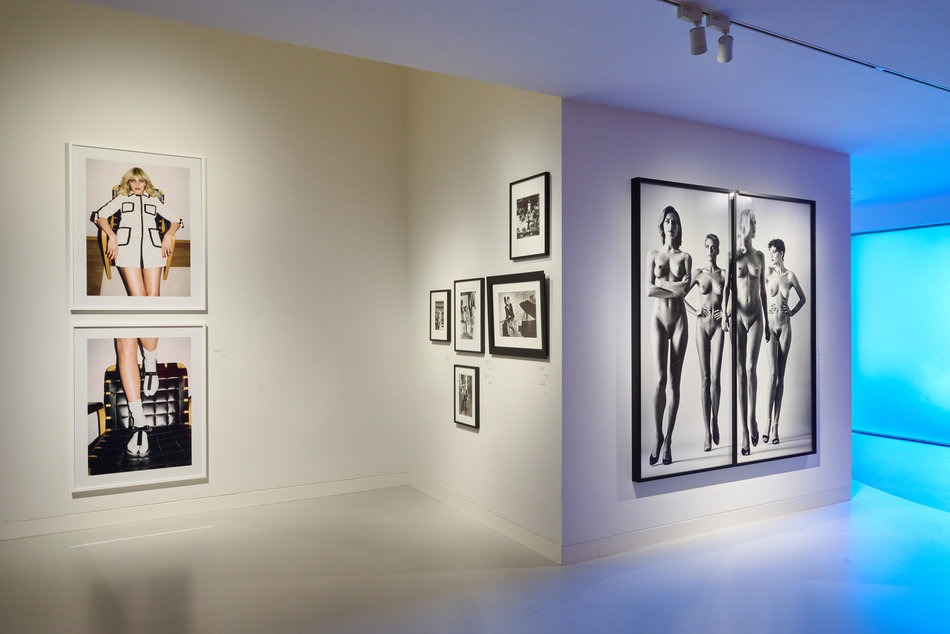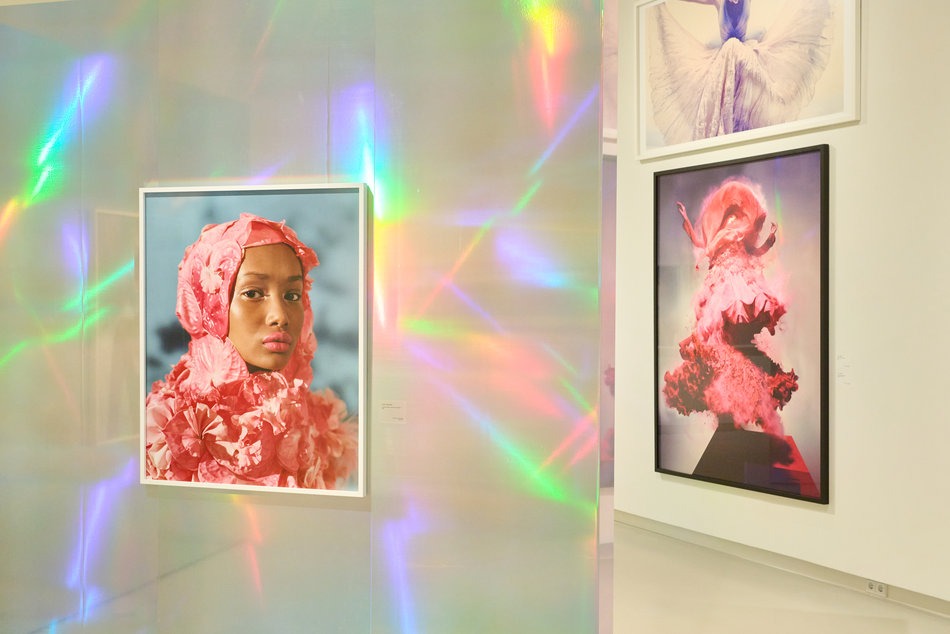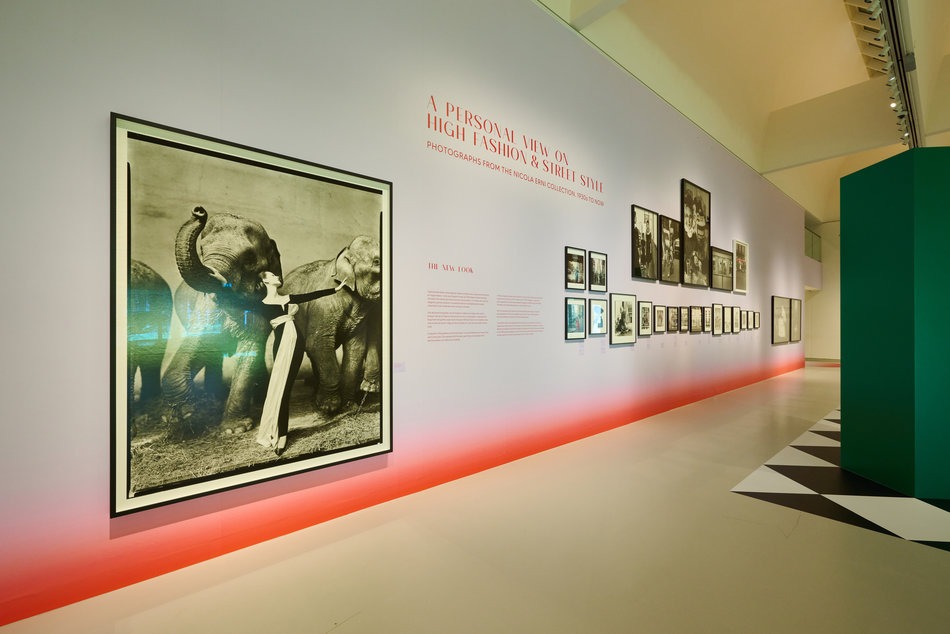Artists
Doug Aitken
from May 2024
Doug Aitken (American, b. 1968)lives and works in Los Angeles and is known as a multimedia artist. After finishing his studies at the Art Center College of Design he built his reputation on architectural interventions and installations that intervene in public space. Defying definitions of genre, he works in an array of media, including photography, video, sound and sculpture. Aitken aims to reimagine the nature of what art can be and how we experience works of art.
Richard Avedon
Richard Avedon (American, 1923–2004) was born in New York into a Jewish family with a well-documented fascination for art, fashion and photography. By means of his new visual language he revolutionised the fashion photography of his time. He’s famous for his love of experimentation, playing with technical aspects, image format, mounting and the poses of his models. In 1944 he received his first formal education in photography at the New York School for Social Research, where he was enrolled in Alexey Brodovitch’s (1898–1871) ‘Design Laboratory’ class. Brodovitch, who was the art director of Harper’s Bazaar, taught his students a conceptual approach to photography. From 1944 to 1965 Avedon worked for Harper’s Bazaar and thereafter almost twenty years for US Vogue. He belongs to a generation of fashion photographers that showed a whole palette of emotions and that opted for diverse outdoor settings as backdrops for the models. Beginning in the late 1950s and early 1960s he published photobooks and is still celebrated today in museum exhibitions.
Jean-Michel Basquiat
Jean-Michel Basquiat (American, 1960-1988) was a painter who lived and worked in New York. He arrived at painting from the graffiti and hip-hop scene around 1980. Within eight years he created an œuvre as fascinating as it is complex. The art-historical canonisation of Basquiat’s works is as diverse as the interpretation of them is subjective. Basquiat was very receptive and well-read and alongside autobiographical references he incorporated into his art his vast knowledge of the streets, of historical, sociocultural and art-historical erudition, of literature, music, comics, symbols, and visual references from TV and mass media. During his creative period in the 1980s he became great friends with the famous pop-art artist Andy Warhol and the two created over 130 collaboration works together.
Elmgreen & Dragset
Michael Elmgreen (Danish, b. 1961) and Ingar Dragset (Norwegian, b. 1969) both live in Berlin and since 1995 have worked as an artist duo under the name Elmgreen & Dragset. With their work they examine objects in their historical, political, cultural and sociological context, question the status quo and re-contextualise. By so doing, Elmgreen & Dragset walk a line between art and architecture, installation and performance. Their international breakthrough came with the permanent Installation Prada Marfa in 2005, when they installed a sham Prada store in the middle of nowhere in the Texas desert. The installation The Collectors was their contribution for the adjacent Danish and Nordic Pavilions at the 53rd Venice Biennale in 2009. Since 1997 they have exhibited regularly in key international museums.
Keith Haring
until April 2024
Keith Haring (American, 1958-1990), known for his illustrative depictions of figures and symbols, was an artist and social activist. Initially planning to become a commercial artist, he soon changed his mind and chose to study at the School of Visual Arts in New York. The school was a hub for the Downtown New York art scene. His Pop art emerged from the New York City graffiti subculture of the 1980s. Haring’s popularity grew out of his spontaneous drawings in the subways – chalk outlines of figures, dogs and other stylised images on empty black advertising spaces. In his pieces he combined graffiti, hip-hop and urban aesthetics that were both playful and engaged with social issues.
François Halard
from April 2024
François Halard (French, b. 1961) is a photographer and artist known for his interior and architectural photographs. Trained at the École des Arts Décoratifs in Paris, he was noticed by major names in the decoration and fashion press while still a student. First, he began working for Decoration International, and then with Conde Nast art director Alex Liberman. In 1984, François moved to New York City where he began regular commissions for several Conde Nast publications, including American Vogue, Vanity Fair, GQ, and House & Garden. After 10 years, he decided to work as an independent photographer and create works that are timeless. He lives and works in Arles.
Hiro
Hiro (Japanese, 1930-2021) was a self-taught commercial and fashion photographer. He spent his youth in war-torn China before his family returned to Japan after the end of the Second World War. In Tokyo he discovered his passion for photography. Unceremoniously, he decided to move to New York, where he became a studio assistant to Richard Avedon. Avedon soon sent him to Harper’s Bazaar legendary art director Alexey Brodovitch, and in 1966 Hiro became the first staff photographer of the fashion magazine. Once his talent and the originality of his photographs were discovered, Hiro (birth name Yasuhiro Wakabayashi) pursued a great career in fashion, beauty, still life and portrait photography. His work was often surreal and is characterised by unusual lighting, wonderment and bold colour.
Rashid Johnson
Rashid Johnson (American, b. 1977) is a conceptual artist working and living in New York City. He received his first critical attention in 2001, when his works were shown in the Freestyle exhibition at the Studio Museum in Harlem. Johnson works with various media, including painting, sculpture, ceramics, photography, film and monumental installation. His oeuvre draws on autobiographical references and African American symbolism, particularly in terms of the materials he uses, such as black soap, tropical plants, shea butter, tiles and graffiti. He addresses issues of cultural identity and social belonging as well as the emotions associated with them.
Tilly Joos
Tilly Joos (Swiss, b. 2000) expresses herself by using symbols and colours to create images with a graphic visual language. Inspired by her stays in Mexico and amongst other cultures, Joos creates bright opaque images. The young visual artist completed the remedial course at the Zurich University of the Arts and debuted in a group exhibition in March 2022, in St. Moritz, Engadin.
Steven Meisel
from April 2024
Steven Meisel (American, b. 1954) lives and works in New York. Meisel studied fashion illustration at the Parsons School for Design in New York where he later taught part-time. He started working for the fashion designer Roy Halston Frowick as an illustrator and thereupon moved to Women’s Wear Daily. As a side job, he photographed models for a model agency and was fascinated by the medium to which he dedicated himself from then onward. As one of the very first photographers, Meisel signed a major contact with the publisher Condé Nast to create every cover for Vogue Italia from 1988 to 2014. He also worked for numerous other magazines. e.g. W Magazine and Vanity Fair Italy.
Pipilotti Rist
from October 2023
Pipilotti Rist (Swiss, b. 1962) was born in the Swiss Rhine Valley and has been a central figure within the international art scene since the mid-1980s. She initially studied commercial art, illustration, and photography before transitioning into video and multimedia art. Since her now famous single channel videos, such as ‘Ever Is Over All’, 1997 and ‘Pickelporno’, 1992 one of Pipilotti Rist’s defining features is her pioneering use of filmed material. In playful exploration of the technical possibilities, sound, and vivid color tones Rist creates footage. Her immersive, large-scale video projections envelop viewers in a sensory experience, blurring the boundaries between art, space, and the spectator.
Pamela Rosenkranz
Pamela Rosenkranz (Swiss, b. 1979) is known for her conceptual objects, installations and paintings. She pairs familiar objects like FIJI water bottles, which are filled with skin-coloured liquids, with body prints on different surfaces. Almost bitingly, she reduces something as grand as identity to a synthetic fleshiness. Her works represent the relationship between consumer products and the living, breathing bodies that use them. Rosenkranz represented Switzerland at the 55th Venice Biennale in 2015.
Julian Schnabel
Julian Schnabel (American, b. 1951) lives and works between New York and Montauk (Long Island). Schnabel studied art at the University of Houston (1969–73) and attended an Independent Study Programme at Whitney Museum of American Art (1973–74). After a first stay in Italy in 1977, Schnabel paid another visit to Europe a year later and was particularly inspired by the architecture of Antoni Gaudí in Spain. The idea for his renowened large-format paintings made with broken ceramic plates has its roots in that very first trip to Barcelona. Beside the so-called “plate paintings”, Schnabel experiments with a vast rage of materials and substrates to create his monumental works.
Mario Testino
until December 2023
Mario Testino (Peruvian, b. 1954) is one of the most renowned fashion and portrait photographers of our time, having risen to international fame in 1997 with a portrait of the late Princess Diana. His photographs are a reflection of his personality, whether in their joyful colourfulness, sexy sensuality and relaxed serenity, or in his models’ trust in Testino as a photographer and the touching intimacy of his portraits.
Tim Walker
Tim Walker (British, b. 1970) creates otherworldly photographs. His fiction and fantasy compositions often involve combinations of interior and exterior and changes of scale. Tim Walker became interested in photography at the Condé Nast library in London where he worked on the Cecil Beaton archive. After graduating in Photography from the Exeter College of Art in Oxford, he worked as an assistant to Richard Avedon in New York. Soon after, Walker began shooting fashion stories for Vogue and W Magazine. Walker’s photographs are nostalgic for an era of innocence and exuberance, youthful imagination and unique aesthetics. The artist lives and works in London.
Ai Weiwei
from July 2024
Ai Weiwei (Chinese, b. 1957) is known for his provocative works that blend art with social commentary and political activism. His work spans various media, including sculpture, installation, photography, and film challenging the status quo and advocates for social justice. Ai Weiwei studied animation at the Beijing Film Academy before moving to the United States in 1981. After returning to China in the early 1990s, Ai Weiwei became a prominent figure in the Chinese art scene. The concept artist is a vocal critic of the Chinese government, focusing on human rights and freedom of expression. His activism has led to multiple clashes with authorities, including his high-profile arrest in 2011. Despite these challenges, his works are exhibited in major museums and galleries worldwide, and he remains a pitoval figure.
Harley Weir
Harley Weir (British, b. 1991) studied Fine Art at Central Saint Martins College and is known for creating intimate images and films. Before embarking on a career as a fashion photographer, she moved back and forth with ease between personal and commercial work. Weir’s images are often carefully composed with a highly attuned sense of colour and mise-en-scène. One encounters a candid naturalism that refers to historical models and contemporary portraits. Having shot numerous campaigns for luxury brands, compelling editorials and a series of personal projects, she has become a leading force in the photography and film industries.



